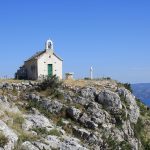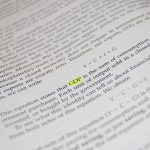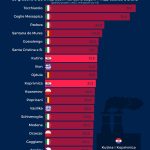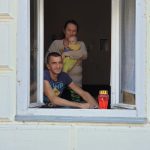Questions about property in Croatia are common, and while the prices vary dramatically in various regions of the country, with places like Split and Dubrovnik typically dominating, there have been some significant fluctuations.
As Novac.hr/Jutarnji/Iva Novak writes on the 15th of December, 2018, Crozilla.com’s data on property in Croatia showed that average prices of advertised houses rose by 0.8 percent in November. When comparing them to apartments, which are still more expensive than houses, the difference was almost 21 percent.
Dubrovnik, with a difference of 10 percent, and Poreč with 2.5 percent, remained, as they did in previous months, rare cities in which houses were more expensive than apartments. The biggest monthly increase was recorded in Dubrovnik, where prices rose 5.8 percent, so the value per square metre in a house, with the price of a garden included, rose to 4,145 euros.
For a square metre of a house in Poreč, an average of 1,911 euros was requested, which is 0.4 percent more than it was during the previous month. The biggest difference in prices during November posted on Crozilla.com in Bjelovar, where houses were more than 44 percent cheaper than apartments, and then in Osijek where the difference was 39 percent, followed by Varaždin, at 36.3 percent.
The average advertised price of houses in Bjelovar was only 434 euros per square metre, which is 0.9 percent less than the month before. In Osijek, their value rose by 1.2 percent, while the price per square metre was only 587 euros. The data also showed that houses in Varaždin increased by 0.6 percent on average, and 713 euros was being asked per square metre.
In Zagreb, house prices were almost 34 percent lower than apartment prices, and the price per square metre advertised was 1,261 euros on average, representing a monthly increase of 0.7 percent. In Slavonski Brod, a 634 euros per square metre of a house was demanded, which is almost 21 percent less than the price of the apartment there.
The value of houses fell by 0.3 percent on the monthly level, as well as in Senj, where they were 25 percent cheaper than apartments, and their average cost was 1,195 euros per square metre. Lower monthly value in the amount of 0.9 percent was recorded in Umag, where 1,877 euros was being requested per square metre for a house, which is 7.8 percent less than the average price of apartments there.
In Opatija, house prices fell by 1.1 percent, and the value of their ”square metres” dropped to 2,216 euros, which is almost 25 percent less than the advertised apartment price. There was a similar difference in the prices of houses and flats in Šibenik, where the average square metre price in a house averaged 1,529 euros, which is 0.1 percent less than it was during the previous month.
In Zadar, however, houses were about 23 percent cheaper than apartments.
Their monthly values increased by 0.5 percent in November, and the price per square metre, with a garden included, stood at 1,698 euros. The prices of houses in Split rose by 3.8 percent on a monthly basis and reached 2,417 euros per square metre. Housing there during November was about 15 percent cheaper than apartments there were, and such a difference in prices was also recorded in Rijeka, where 1,229 euros per square metre were being demanded, 0.8 percent more than the previous month.
In Pula, according to Crozilla.com, prices on a monthly basis increased by 0.3 percent, so the price per square metre of a house demanded 1,459 euros on average, which is 13.1 percent less than the price of the apartment.
Make sure to follow our dedicated lifestyle page for more information on property in Croatia and much more.
Click here for the original article by Iva Novak for Novac.hr/Jutarnji







